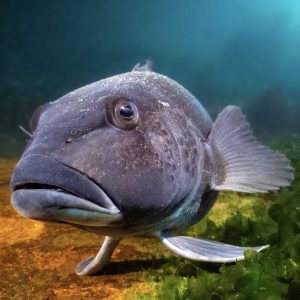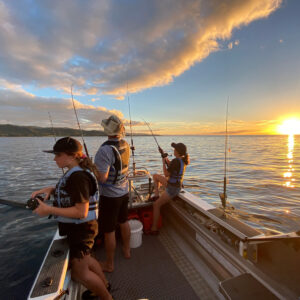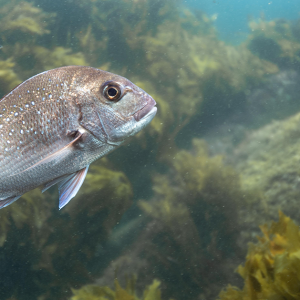One of the major talking points during the snapper campaign in 2013 was the assertion that recreational catch had increased exponentially and that effort needed to be reined in through bag limit reductions. Fact is, management of Snapper 1 had not been reviewed for 16 years and the recreational allowance made in 1997 did not reflect any sliver of reality, either then or now.
People reacted in a variety of ways and thousands supported LegaSea’s Save Our Snapper campaign. Now the rules have changed. The bag limit is down from 9 to 7, and the minimum legal size has been increased 3cm, to 30cm.
These changes have been made to fit recreational snapper catch into the new overall allowance of 3050 tonnes. This tonnage reflects the estimated 5-year average catch of all snapper fishers in Area 1, between North Cape and the eastern Bay of Plenty, and is close to the 3100 tonnes we advocated for in our 2013 snapper submission.

The big difference is how the recreational allowance is interpreted. Ministry officials often advise the Minister that the allowance is a fixed amount in which recreational harvest should fit. After being through the Courts with the Kahawai Legal Challenge we are clear -recreational fishing is not part of the Quota Management System so, unlike commercial fishing, we do not have a fixed allocation that we must adhere to (notwithstanding that recreational fishers are obliged to adhere to size and daily bag limits).
When compared to an allocation, recreational allowances are much more flexible, in recognition that total catch can vary between years due to weather and other factors, and that recreational fishing is a popular activity done on a random basis by almost a million people.
Estimates of catch
In 2009 the National Government committed $4 million dollars over four years to get better recreational harvest estimates and introduce charter reporting. It took two years of planning and pilot testing before a national multi-species survey was approved and conducted in the 2011-12 fishing year.
A positive aspect of the survey was the high level cooperation of recreational fishers when they were intercepted at boat ramps. Recreational fishers realise that, while surveys are a mere snapshot of real harvest, information is important to the ongoing management of our fisheries.
The next large scale multi-species project is planned for 2016-17. In the intervening years NIWA collects data from web cameras on key boat ramps 24/7 and has 60 days with interviewers at those ramps to establish the proportion of boats fishing and what was caught. In Area 1 during the 2012-13 year, the average snapper catch per person was around 2kg per trip. In the same area, boat fishers averaged about 1kg of kahawai per person per trip.
These individual catches are not uncontrollable or unreasonable. We need to celebrate that people are making the effort to put natural, unprocessed food on the table for their family. People are also learning new ways to take better care of their catch, to share unused portions with others in their community through freefishheads.co.nz and many are conserving fish on a regular basis, by not taking their daily entitlement.
How the system works
Currently the Minister for Primary Industries decides on total catch limits and how the available fish are shared amongst the various interest groups. In theory, the process to decide the Total Allowable Catch takes into account the precautionary principles of the Fisheries Act 1996 and any uncertainty relating to the data, prior to any consideration of who gets access to the fish.
The legislation specifies the Minister shall ‘allow for’ Maori customary and recreational interests. The non-commercial allowances are made using best available information, including recent survey results.
Allowances are not rigid like the quota limits allocated per species to commercial interests because it is inevitable that recreational catch and values change over time. For example, our understanding and the way we treat fish is different to how people behaved in the past, because things change and we are constantly learning.
Allowances also provide for population growth, recognising that over time a greater allowance will be required if people expect to continue to put fish on the table. Currently, recreational interests need to lobby the Minister if they want to strengthen their interests when allocation decisions are made.
The Minister is obliged to set aside enough to cover the expected mortality associated with recreational fishing. He can use a variety of controls to try and maintain recreational catch within an expected average harvest level, but the overall allowance must be reasonable.
As recreational advocacy has developed and generated better funding, people and groups like LegaSea are now more vocal about their fishing and environmental interests. Not unexpectedly, there has been a strong push-back from the Ministry, commercial interests and others who consider recreational fishing to be a threat. However, the real danger lurks in our officials’ reliance on the Quota Management System. This is often touted as ‘world leading, yet after 28 years we have not made significant inroads into rebuilding our depleted fisheries or addressing the unbridled waste of small fish caused by bulk harvesting methods deployed inshore.
Increasing numbers of people are now supporting LegaSea to promote these issues to the Minister. LegaSea strives to ensure that future generations of Kiwis will enjoy an abundant fishery, and that sustainability and productivity are at the forefront when allocation decisions are made. LegaSea is wary that a legislative change may be on the agenda now that the election has come and gone. Changes may be presented in a variety of formats including catch reductions or area restrictions.
Legislative change is not required because the current Fisheries Act has adequate environmental and sustainability principles. We would strongly support the Minister if he were to apply those principles and take a precautionary approach when making management decisions.
Our expert fisheries management and science team at the New Zealand Sport Fishing Council is committed to a range of processes to improve management outcomes for recreational fishing and environmental interests. Collectively we will examine any proposal that seeks to perpetuate the myth about uncontrolled recreational fishing, because nothing could be further from the truth.





